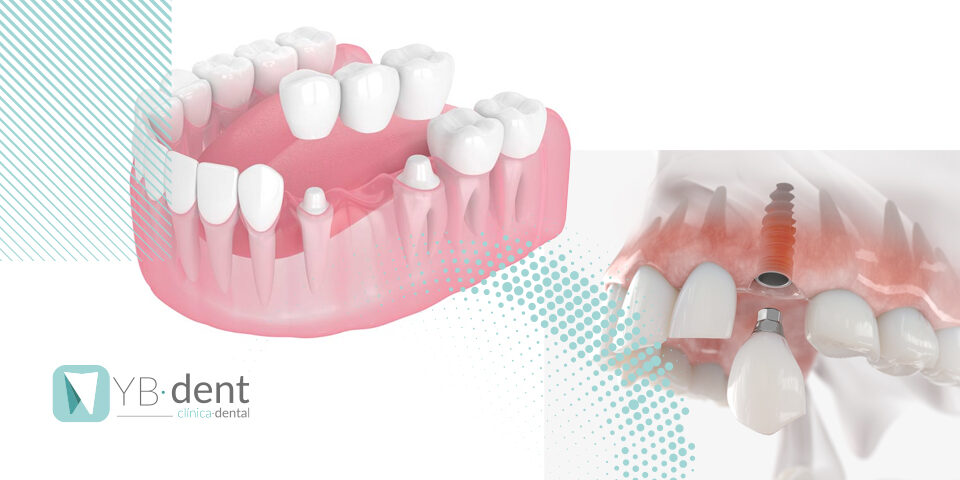Evitar la sensibilidad dental

El manejo de la sensibilidad dental es importante para la salud bucal, la salud en general y para llevar una mejor calidad de vida. La incomodidad asociada con ella puede crear una barrera a la hora de llevar a cabo una higiene oral adecuada evitando zonas afectadas.
Es por eso que los pacientes tienden a cambiar su técnica de cepillado. Provocando la acumulación de placa bacteriana y aumenta el riesgo de caries. Siendo esta una de las principales causas de la sensibilidad dental.
Es por esto que en YBdent Clínica dental en Valencia queremos darte los mejores consejos para evitarla y remediarla.
¿Qué es la sensibilidad dental?
La sensibilidad dental se siente como un dolor fuerte y persistente en respuesta a una serie de estímulos que pueden ser mecánicos, químicos o térmicos. Este dolor es causado por la erosión de la capa de esmalte o la contracción de las encías y la exposición de la dentina, que es la parte interna del diente y la pérdida de su capa protectora natural. La intensidad de este dolor puede ser leve, moderada o severa según la edad y el estímulo que viaja desde la dentina hasta el nervio.
Muchas veces este tipo de patología no se identifica correctamente o el paciente lo hace en silencio. Pero la sensibilidad dental es muy común, afecta hasta uno de cada cinco adultos y generalmente ocurre entre los 18 y los 40 años.
¿Qué provoca la sensibilidad dental?
El esmalte es el tejido más duro de nuestro cuerpo, es la capa superficial que protege los tejidos internos como la dentina. La dentina contiene los nervios y vasos sanguíneos del diente, por esto cuando el esmalte se va erosionando y esta dentina se expone, los dientes son mucho más sensibles a estímulos externos. Hay muchos factores que pueden provocar la sensibilidad dental:
- Trastornos alimentarios: El desgaste de los dientes en este tipo de trastorno, especialmente en la bulimia, es porque el ácido gástrico erosiona el esmalte por culpa de los vómitos frecuentes.
- Cepillado muy fuerte o pasta de dientes abrasiva: Si tenemos un cepillado muy fuerte o un cepillo de cerdas muy duras, al tiempo, puede desgastar la capa que protege los dientes. También puede dar el caso que sea el dentífrico que estamos usando, ya que tal vez contenga sustancias muy abrasivas.
- Gingivitis: El desgaste de las encías es un problema muy común que afecta a las personas que sobre todo no mantienen una correcta higiene bucodental.
- El uso exagerado de flúores o enjuagues bucales también provoca la pérdida del esmalte
- Consumo de alimentos o bebidas muy ácidas. Hay productos como refrescos o cítricos que son demasiado ácidos, contribuyendo así al desgaste del esmalte.
- Algunos tratamientos odontológicos, como la cirugía periodontal, limpiezas profesionales o incluso un tratamiento de blanquear los dientes, puede provocar una sensibilidad transitoria.
- Si tenemos en la boca caries, empastes desgastados o dientes agrietados, el esmalte dental se ve afectado y por esto puede provocar bastante sensibilidad.
Consejos para evitar la sensibilidad dental
Para evitar la molestia que conlleva la sensibilidad dental, podemos seguir algunos consejos:
- Mantener una adecuada higiene bucal. Para ello, debes cepillarte los dientes al menos dos veces al día durante dos minutos. Haz pequeños movimientos circulares y evita cepillarte de lado a lado.
- No usar cepillos de dientes de mucha dureza. Un cepillo suave no nos desgastará tanto el esmalte de los dientes.
- Usar pasta de dientes, flúores y otros productos poco abrasivos. Existen soluciones de pastas de dientes desensibilizantes para ayudar a la reparación del esmalte.
- No consumir bebidas ni alimentos muy ácidos porque desgastan el esmalte y la dentina y provocan sensibilidad dental.
- Corregir hábitos como el bruxismo, que es el gesto de refrotar los dientes unos contra otros de forma involuntaria, porque así también evitaremos le desgaste del esmalte.
- Evitar gestos de introducirse objetos o productos metálicos o muy rígidos en la boca ya que también produce desgaste en los dientes.
- Todos estos anteriores consejos son buenos para evitar o reducir la sensibilidad dental, aunque la mejor forma de determinar las causas de la sensibilidad es acudiendo a un dentista profesional como Clínica dental YB-dent.



